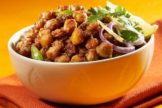
Global Ready-To-Eat Food Market Trends, Applications, Analysis, Growth, and Forecast: 2018 to 2027
-
3476
-
May 2023
-
164
-
-
This report was compiled by Correspondence Linkedin | Detailed Market research Methodology Our methodology involves a mix of primary research, including interviews with leading mental health experts, and secondary research from reputable medical journals and databases. View Detailed Methodology Page
-
MarketResearch.biz, in its upcoming report titled, “Global Ready-To-Eat Food Market Trends, Applications, Analysis, Growth, and Forecast: 2018 to 2027”, offers in-depth insights, revenue details, and other vital information regarding the global ready-to-eat food market and the various trends, drivers, restraints, opportunities, and threats in the target market till 2026. The report also offers insightful and detailed information regarding the various key players operating in the global ready-to-eat food market, and their financials, apart from strategies, acquisitions & mergers, and market footprint.
Ready-to-eat food is referred to packaged cooked food which does not require further processing to ensure the quality. It can be refrigerated, is shelf-stable and require minimal heating or are served hot. Some food requires to be stored in the refrigerator or freezer until used but some require special handling to ensure quality of food. This includes food such as baked goods, meat and animal products, shelf-stable foods, desserts, cheese and dairy products. According to the U.S. Food and Drug Administration safety regulations to prevent foodborne illness, refrigerator should be set at 40 degrees Fahrenheit for opened luncheon meat packages and can be refrigerated for three to five days, and unopened packages of luncheon meat for up to 2 weeks. According to Food Safety.gov. unopened or opened packages of luncheon meat can be stored in freezer for one to two months. Dairy products have variations in its storage requirements. The breads have a shelf life of three to five days and need to be stored at 70°F. The frozen food should be kept below -9.5°C for prevention of microorganisms’ growth, resulting in slow decomposition and longer shelve life and canned products should be stored between 50 and 70 degrees F.
Changing consumer preferences towards convenient food coupled with numerous food delivery apps are the key factors expected to fuel the growth of the global ready-to-eat food market. In addition, dual-income families, increasing millennial and working women population expected to further boost the demand for ready-to-eat food market. However, rising cases of failed quality tests of ready-to-eat food is the major factor expected to restrain market growth over the forecast period as some companies fail to match up to the safety regulations and quality of food. In addition, increasing health concerns, in all generations, is another factor hampering growth of the ready-to-eat food market.
Ready-to-eat food with portability is the ongoing trend observed, which is expected to support market growth in the near future. The market is coming up with several new startups offering delivery ready-to-eat food. The food is available in grocery stores, convenience stores, restaurants as well as drug stores.
The market has been segmented on the basis of product type, packaging type, and region. On the basis of region, the market is segmented into North America, Europe, Asia Pacific, Latin America, and Middle East & Africa.
The North America market dominates the ready-to-eat food market in terms of revenue. The market in Asia Pacific is projected to have fastest growth with highest CAGR, owing to increasing adoption for ready-to-eat which is expected to boost growth of the global ready-to-eat food market.
Global Ready-To-Eat Food Market Segmentation:
Segmentation on the basis of product type:
- Meat & Poultry
- Fruits & Vegetable
- Cereals
- Snacks
Segmentation on the basis of packaging type:
- Canned
- Retort
- Frozen or Chilled
Segmentation on the basis of distribution channel:
- Hypermarket/Supermarket
- Convenience/Departmental Store
- Specialty Store
- Online Store
Segmentation on the basis of region:
- North America
- Europe
- Asia Pacific
- Latin America
- Middle East & Africa
Attribute Report Details Market Size Ask For Market Size Growth Rate Ask For Growth Rate Key Companies Ask For Companies Report Coverage Revenue analysis, Competitive landscape, Key company analysis, Market Trends, Key segments, Distribution Channel, Market Dynamics, COVID-19 Impact Analysis and more… Historical Data Period 2015-2020 Base Year 2022 Forecast Period 2022-2031 Region Scope North America, Europe, Asia-Pacific, South America, Middle East & Africa Country Scope United States, Canada and Mexico, Germany, France, UK, Russia and Italy, China, Japan, Korea, India and Southeast Asia, Brazil, Argentina, Colombia etc.Saudi Arabia, UAE, Egypt, Nigeria and South Africa Revenue in US$ Mn -
-
- Nomad Foods Ltd.,
- Bakkavor Foods Ltd.
- General Mills Inc.
- McCain Foods
- Premier Foods Group Ltd.
- 2 Sisters Food Group
- Greencore Group Plc.
- Orkla ASA
- ConAgra Foods, Inc.
- ITC Limited




